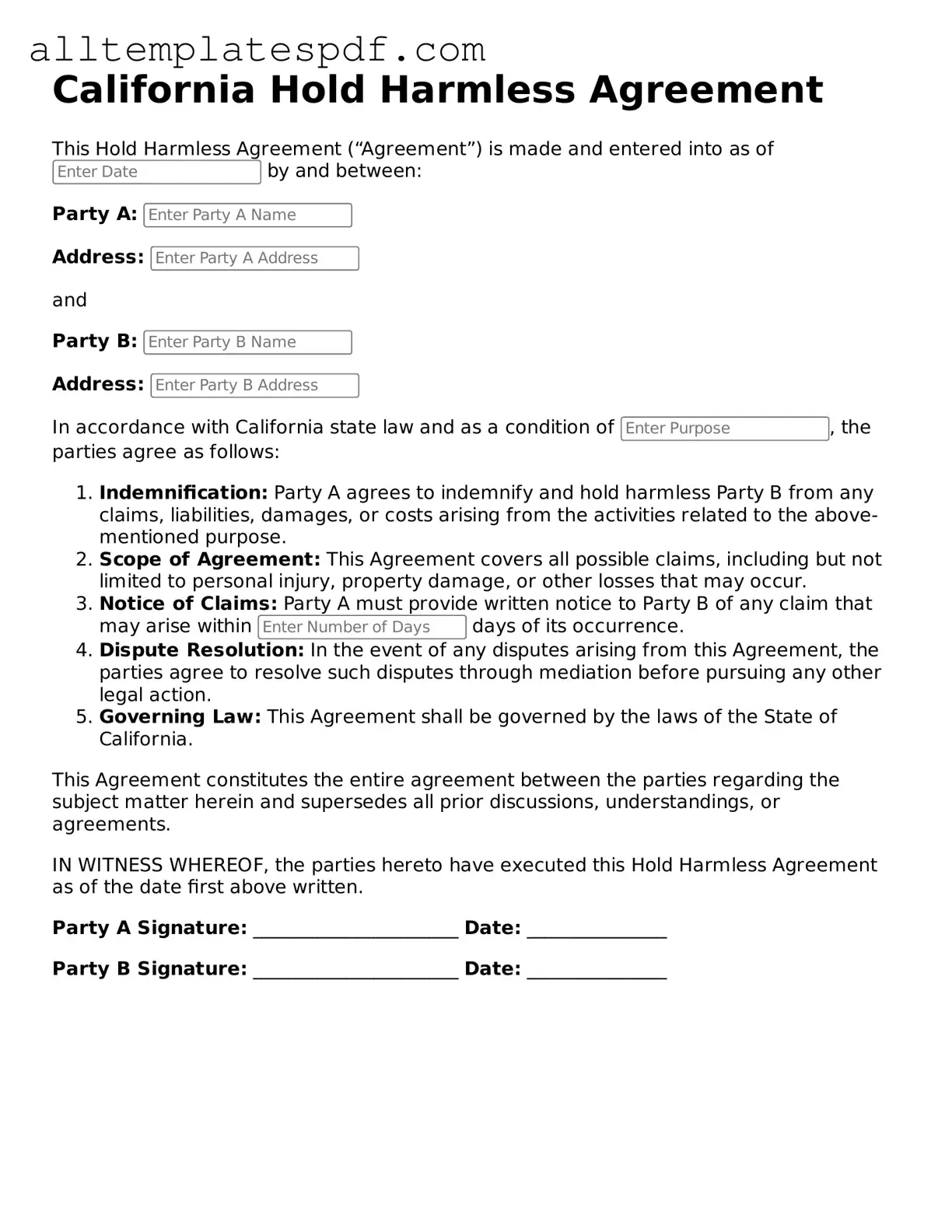Filling out a California Hold Harmless Agreement can be straightforward, but several common mistakes can lead to complications. One frequent error is failing to provide complete information. Each party involved must be clearly identified, including names and addresses. Omitting this information can create ambiguity and potentially invalidate the agreement.
Another mistake is not specifying the scope of the agreement. A Hold Harmless Agreement should clearly outline what activities or situations it covers. Without this clarity, parties may find themselves exposed to liability that they thought was covered.
Many individuals overlook the importance of dates. Failing to include the effective date of the agreement can lead to confusion about when the terms apply. Additionally, not specifying the duration of the agreement can result in misunderstandings about how long the parties are protected.
Inadequate signatures represent another common pitfall. All parties must sign the agreement for it to be legally binding. Sometimes, individuals may assume that a verbal agreement is sufficient, but without written consent, the document lacks enforceability.
Additionally, people often neglect to consult legal advice. While it may seem unnecessary, having a legal expert review the agreement can help ensure that it meets all legal requirements. This step can prevent future disputes and provide peace of mind.
Lastly, failing to keep copies of the signed agreement is a mistake that can lead to problems down the line. Each party should retain a copy for their records. This practice ensures that everyone is on the same page regarding the terms and obligations outlined in the document.
